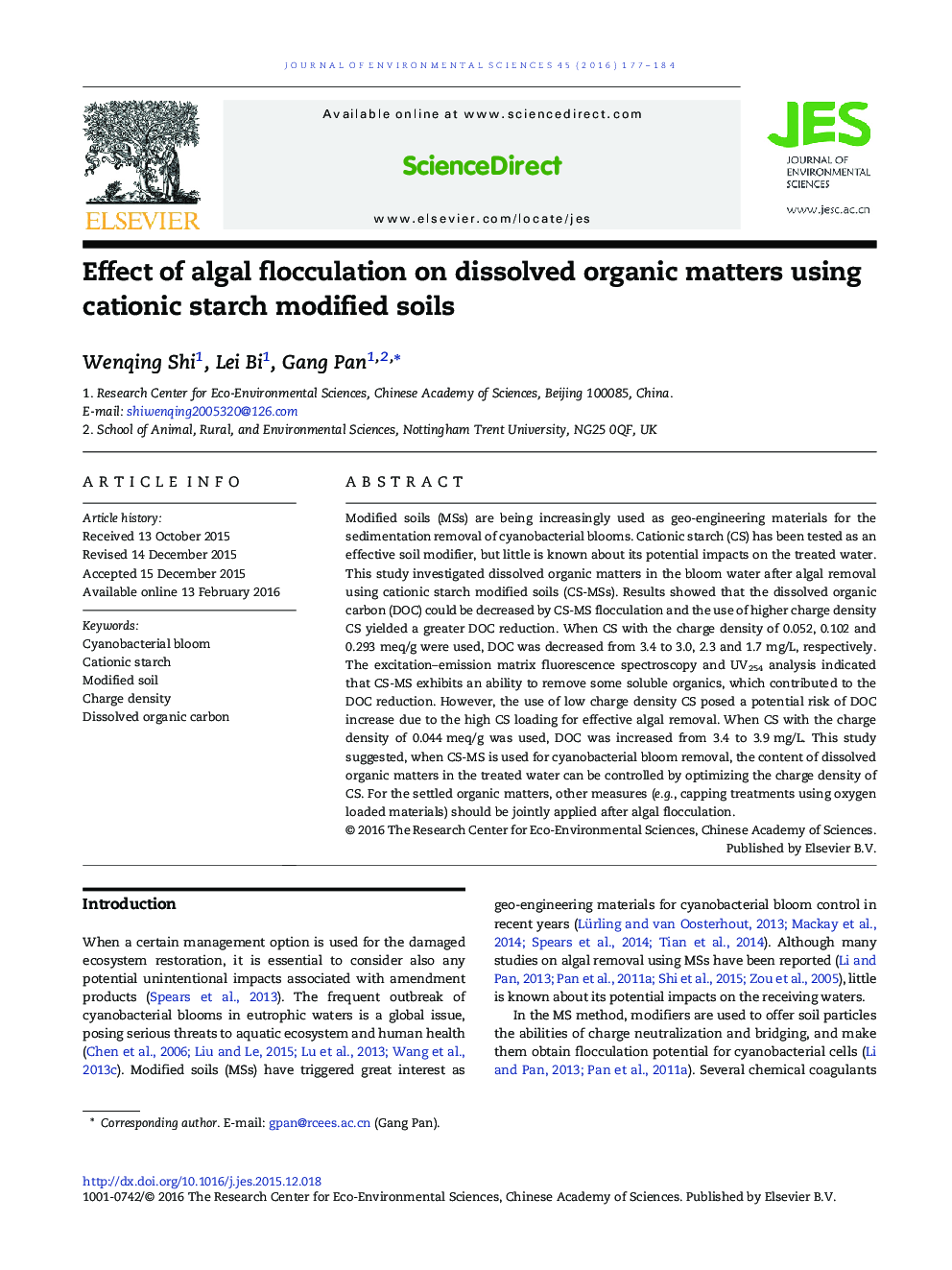| Article ID | Journal | Published Year | Pages | File Type |
|---|---|---|---|---|
| 4453738 | Journal of Environmental Sciences | 2016 | 8 Pages |
Modified soils (MSs) are being increasingly used as geo-engineering materials for the sedimentation removal of cyanobacterial blooms. Cationic starch (CS) has been tested as an effective soil modifier, but little is known about its potential impacts on the treated water. This study investigated dissolved organic matters in the bloom water after algal removal using cationic starch modified soils (CS-MSs). Results showed that the dissolved organic carbon (DOC) could be decreased by CS-MS flocculation and the use of higher charge density CS yielded a greater DOC reduction. When CS with the charge density of 0.052, 0.102 and 0.293 meq/g were used, DOC was decreased from 3.4 to 3.0, 2.3 and 1.7 mg/L, respectively. The excitation–emission matrix fluorescence spectroscopy and UV254 analysis indicated that CS-MS exhibits an ability to remove some soluble organics, which contributed to the DOC reduction. However, the use of low charge density CS posed a potential risk of DOC increase due to the high CS loading for effective algal removal. When CS with the charge density of 0.044 meq/g was used, DOC was increased from 3.4 to 3.9 mg/L. This study suggested, when CS-MS is used for cyanobacterial bloom removal, the content of dissolved organic matters in the treated water can be controlled by optimizing the charge density of CS. For the settled organic matters, other measures (e.g., capping treatments using oxygen loaded materials) should be jointly applied after algal flocculation.
Graphical abstractFigure optionsDownload full-size imageDownload as PowerPoint slide
